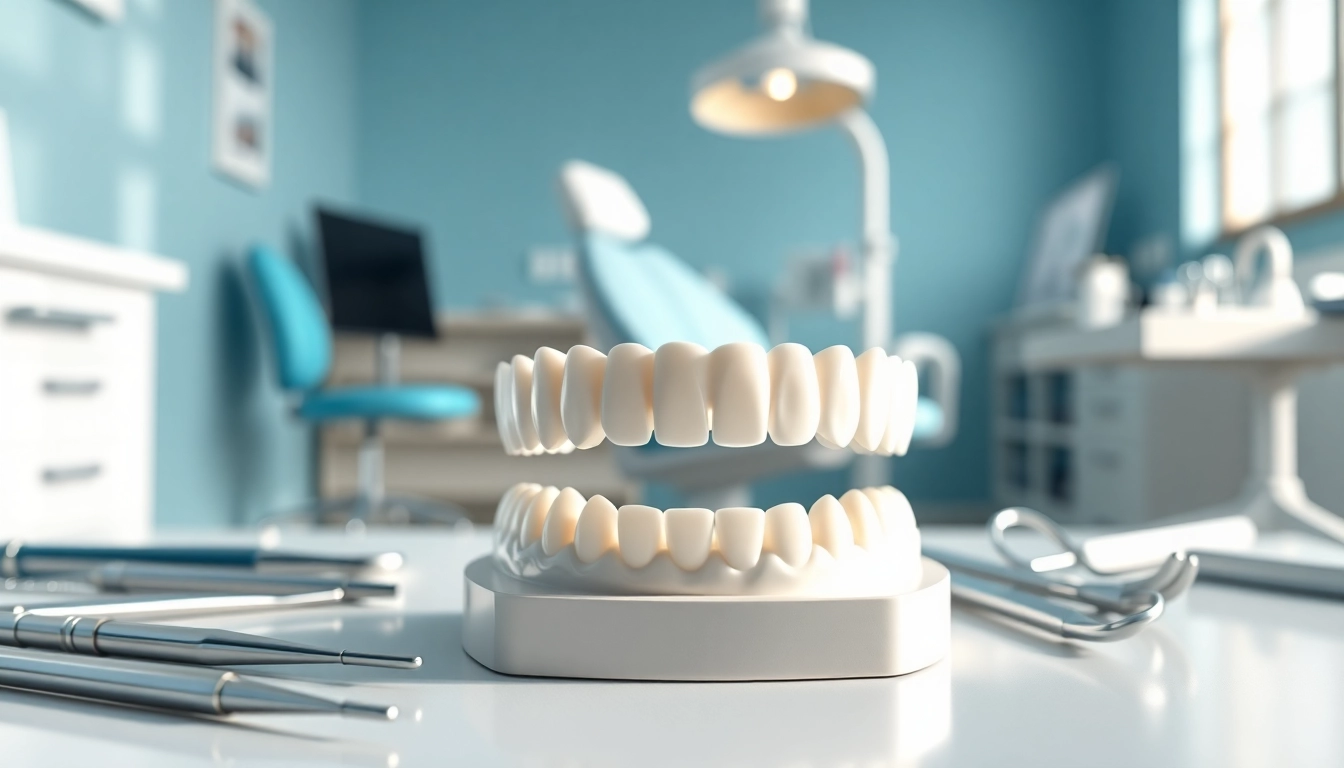Understanding Dental Bridges: A Comprehensive Guide to Restorative Solutions
What Are Dental Bridges?
Definition and Purpose of Bridges
Dental bridges are a vital solution in modern dentistry for individuals facing tooth loss. Essentially, a dental bridge is a dental restoration that connects one or more missing teeth by anchoring to adjacent teeth or dental implants. This creates a bridge-like structure, offering a unified and natural appearance. The primary purpose of bridges is not just aesthetic appeal but also functional restoration, allowing patients to regain the ability to chew and speak confidently.
By restoring the dental arch, bridges maintain proper bite alignment and prevent adjacent teeth from shifting, which can lead to further dental complications.
Types of Dental Bridges Explained
There are several types of dental bridges tailored to different patient needs, which include:
- Traditional Bridges: The most common type, consisting of a false tooth (pontic) held in place by crowns on either side. Traditional bridges are typically supported by natural teeth.
- Cantilever Bridges: Used when there are adjacent teeth on only one side of the missing tooth or teeth. A cantilever bridge anchors to just one adjacent tooth.
- Maryland Bridges: Often preferred for their minimally invasive design, Maryland bridges use a metal or porcelain framework that is bonded to the back of the adjacent teeth.
- Implant-Supported Bridges: A robust option when multiple teeth are missing, implant-supported bridges rely on dental implants for support rather than natural teeth.
Benefits of Utilizing Bridges
Dental bridges offer numerous benefits, including:
- Restoration of Function: They enable patients to chew and speak effectively.
- Aesthetic Improvement: Bridges can greatly enhance the smile and facial symmetry.
- Prevention of Tooth Movement: They help maintain the alignment of remaining teeth.
- Long-lasting Solution: With proper care, bridges can last many years, making them a cost-effective choice in the long run.
How Dental Bridges Work
Materials Used in Dental Bridges
Dental bridges are crafted using various materials depending on the patient’s requirements and preferences. Common materials include:
- Porcelain: Known for its natural appearance, porcelain bridges are ideal for visible areas in the mouth and closely mimic the look of natural teeth.
- Metal: Commonly used for strength and longevity, metal bridges are often employed in the back of the mouth where durability is crucial.
- Porcelain-Fused-to-Metal: This combination provides both aesthetic appeal and strength, making it a popular choice for many patients.
The Process of Getting a Dental Bridge
The procedure for getting a dental bridge typically involves multiple visits:
- Consultation: On your first visit, your dentist will evaluate your oral health, discuss your options, and take necessary x-rays and impressions.
- Preparation: If traditional or cantilever bridges are chosen, adjacent teeth will be filed down to accommodate crowns. The dentist takes impressions to craft the bridge.
- Temporary Bridge Placement: A temporary bridge may be placed to protect the prepared teeth while the permanent bridge is being made.
- Fitting and Adjustment: Once the bridge is ready, it will be fitted and adjusted for comfort and bite. Necessary adjustments may take place before final cementing the bridge.
- Finalization: The final bridge is securely bonded to the adjacent teeth or implants, completing the procedure.
Expected Lifespan of Bridges
The lifespan of dental bridges varies based on material, care, and the patient’s oral hygiene. Generally, bridges can last between 5 to 15 years or longer with proper care. Regular dental visits and good oral hygiene, including daily brushing and flossing, significantly contribute to their durability.
Caring for Your Dental Bridges
Daily Hygiene Tips for Bridges
Maintaining good oral hygiene is critical for the longevity of dental bridges. Here are some tips:
- Brush twice a day using a soft-bristle toothbrush and fluoride toothpaste.
- Use dental floss or an interdental brush to clean around the bridge and adjacent teeth.
- Consider using an antibacterial mouthwash to reduce plaque buildup.
Foods to Avoid with Dental Bridges
Certain foods can damage dental bridges or compromise hygiene. It’s advisable to avoid:
- Sticky candies and caramel, which can pull the bridge out of place.
- Hard foods like nuts or hard candies that could break the bridge.
- Excessively crunchy raw vegetables that may dislodge components of the bridge.
Regular Dental Check-ups for Bridge Maintenance
Routine dental visits are essential for monitoring the integrity of bridges. Regular check-ups allow dentists to check for plaque buildup, examine the fit of the bridge, and ensure no decay is present under the bridge.
Potential Issues with Dental Bridges
Common Complications and Solutions
Like any dental restoration, bridges can experience complications. Common issues include:
- Decay Around the Bridge: Regular hygiene and check-ups can resolve this. If decay is found, the dentist may need to replace the bridge.
- Bridge Loosening: If a bridge becomes loose, it requires immediate attention. The dentist can re-cement or replace it as necessary.
- Gum Issues: Gum discomfort or recession can occur around a bridge. Good hygiene will help, and consulting a dentist is critical for treatment.
Signs to Look For After Getting a Bridge
After the placement of a bridge, watch for the following signs that may indicate an issue:
- Pain or sensitivity around the bridge or adjacent teeth.
- Visible gaps or looseness in the bridge.
- Changes in bite or difficulty chewing.
When to Contact Your Dentist
If you experience any of the above issues, or if any discomfort persists, it is essential to contact your dentist promptly to address the situation before it worsens.
Choosing the Right Dentist for Your Bridges
What to Look for in a Dental Provider
When choosing a dentist for bridge work, consider the following:
- Experience and Expertise: Look for a dentist with extensive experience in restorative dentistry.
- Positive Reviews and Recommendations: Research online reviews and ask for referrals to find reputable practitioners.
- Advanced Technology and Techniques: A dentist who uses modern technology can provide better results and comfort.
Questions to Ask Before Your Procedure
Before committing, ask potential dentists the following:
- What types of materials do you use for bridges?
- Can you walk me through the entire process?
- What are the post-operative care instructions?
- How will you handle any complications that arise?
Understanding Costs and Insurance Options
The cost of dental bridges can vary widely based on factors such as materials and location. It’s important to discuss costs upfront, including what is covered by dental insurance. Consider discussing the financing options available at the dental practice to ease the affordability of treatment.
For further insights on bridges and oral health, consider consulting your local dental provider. Understanding the available solutions can lead to optimal dental health and improve your quality of life. If you are looking for comprehensive dental services, including bridge placements, visit bridges and other restorative options tailored for your needs.














Post Comment